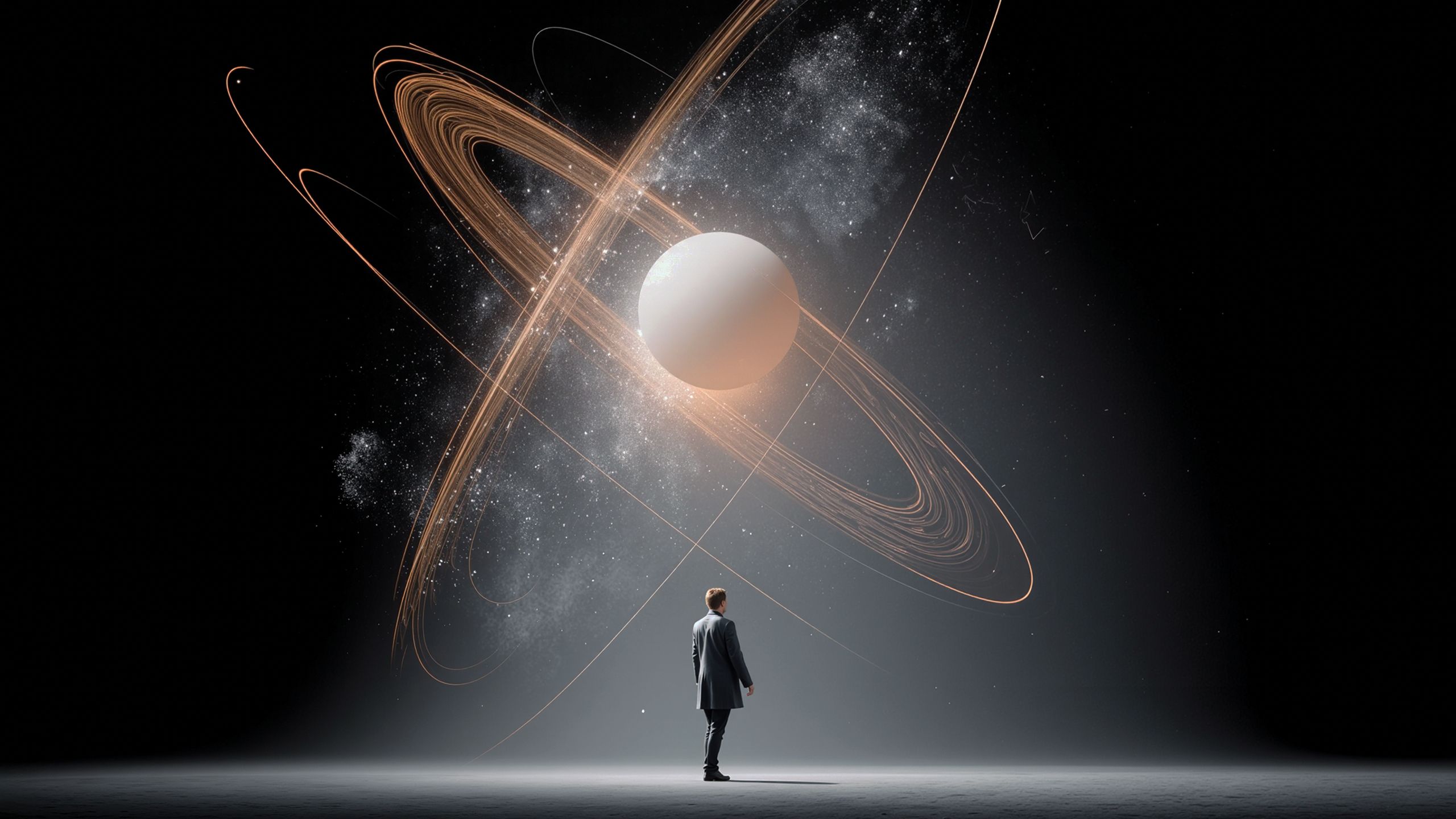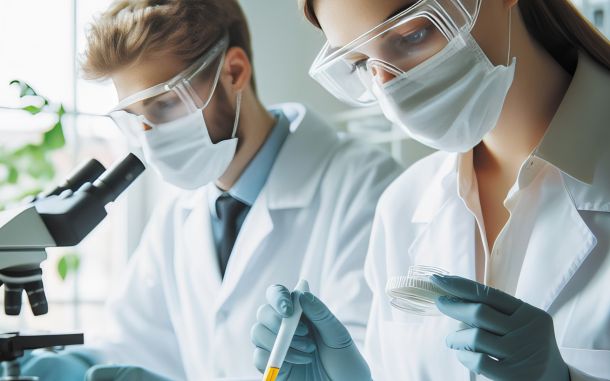Protons' Story: A Journey into the Heart of the Atom

In This Article
-
Protons are not just essential in medicine; they are the essence of an element's identity.
-
Despite their smallness, protons shoulder immense responsibilities, obeying the laws set by their Creator.
-
From the tiniest particles to the vastest structures, everything in creation is crafted with meticulous planning.
During a serene Californian summer retreat, I overheard a captivating conversation between two physicists. In the calm of the setting, their words, filled with passion, seemed to transcend the usual concerns of the world. Unable to resist, I found myself making a “quantum” leap, much like an electron excited to a higher state. Dr. Serdar was enthusiastically discussing proton therapy in cancer treatment, explaining how the proton beam's properties are carefully coordinated between physicians and physicists during treatment. His words resonated deeply as he reflected on the progress humanity has made in science and the importance of their work. He even joked that if cancer were cured, he would happily switch careers and become a chef.
I enjoyed the conversation and later reflected on how important protons are, despite their small size, and the significant roles they play in serving humanity. In our daily lives, we seldom think of them and “confine” them to the “borders” of a nucleus. Yet, they offer so much more. The more we understand their nature and get to know them, the more they reveal their secrets. Interestingly, to coax them into whispering the codes of their mysterious world, they must be smashed, banged, and subjected to high and low potentials. Harsh as it may sound, aren’t we humans a lot like them? What we do to them, we also face in life. We carry innate positivity within us, yet it often lies dormant, like a seed. Life challenges us with its ups and downs, leading to plenty of “oops” moments. Through these experiences, we uncover new depths, subtle details, and greater discoveries, exploring more of ourselves and the world around us.
Inspired by the discussion, I wanted to dedicate this essay to protons as a tribute to their service, obedience to the laws of their Creator, and the rigor they demonstrate before our eyes. While our tiny titans, protons, constantly make history, let’s take a brief look at their discovery. How they are continually created is, of course, a much larger question – one that goes beyond the scope of this article. The discovery of protons itself spanned over a century. In 1917, Ernest Rutherford discovered the proton by bombarding nitrogen gas with alpha particles. The ejected hydrogen nuclei confirmed the presence of the proton, a fundamental particle in all atomic nuclei. In 1920, he officially named it the "proton," solidifying its place in atomic theory.
While protons continue to guard their secrets and draw countless researchers with their allure, I was reminded of Said Nursi’s words about creation. In his book The Words, he says, “For sure, ‘to make one thing everything, and everything one thing’ is a sign, a mark, peculiar to the Creator of all things, the One Powerful over all things” (Eighth Word). This "one thing" could refer to anything—an entity or even a particle. Yet, the fact that hydrogen is the most abundant element in the universe, with its nucleus consisting of a single proton, sparked my thoughts once again. It is awe-inspiring to reflect on how the All-Mighty Creator uses the smallest things to bring about indescribable and incomprehensible complexity—complexity that allows us to perceive order amidst the layers of chaos that weave through creation.
Yes, it is small—tiny, even—yet we still have much to learn about protons, as they carry information about the entire creation. I recently watched a fascinating documentary about an artist collaborating with physicists to produce a visual rendering of a proton. The challenges they faced were narrated with remarkable precision and astonishment, highlighting how delicate and complex the structure of a proton is. The work of visualizing such a fundamental particle speaks to the depth of its mystery, and how much more there is to discover. It underscores the power of collaboration between art and
science in shedding light on the unseen world of subatomic particles, revealing the intricate connections that hold protons together in a stable structure.
The proton: Unveiling the mystery of matter
The proton, an electrically positively charged particle at the heart of the atom, is far more complex than it first appears, resisting simple characterization. Its behavior and structure change depending on how it is probed, revealing a layer of complexity that challenges our understanding at every turn.
In 1967, experiments at SLAC (the Stanford Linear Accelerator Center) revealed that protons are composed of point-like particles known as quarks—two "up" quarks and one "down" quark—each with distinct electrical charges. Quantum Chromodynamics (QCD) advanced our understanding further, revealing that the proton is not just made of quarks but also hosts a "sea" of transient quarks, antiquarks, and gluons. These fleeting particles interact continuously, contributing to the proton’s mass, spin, and stability. This makes the proton's internal structure one of the most enigmatic puzzles in modern physics. While it would be fascinating to elaborate more on these features, let’s keep our focus and continue exploring their significance. Despite decades of study, the proton continues to surprise us. It’s not just a fundamental building block of matter, but a window into deeper truths about the universe.
The many roles of protons: From medicine to technology
Protons are not just essential in medicine; they are the essence of an element's identity. Think of them as an ID, SSN, or passport number—defining the diversity of materials and elements in the universe. The number of protons in an atom's nucleus, or atomic number, uniquely identifies an element on the periodic table. This fundamental role underscores their significance, extending beyond applications like proton therapy, where their unique properties are utilized for precise cancer treatments.
First of all, protons are positively charged particles with significant mass compared to electrons. This allows precise control over their path in a magnetic or electric field. Medical physicists can more easily control their path, direct them to the targeted tissues, and obtain more effective results in their use. Protons deliver the majority of their energy at a specific depth in tissue, known as the "Bragg peak." This characteristic allows protons to release their maximum energy at the tumor site while minimizing damage to surrounding healthy tissue. This property makes them safer to use compared to gamma or X-rays. Protons scatter less as they travel through tissues, which enhances their precision and reduces the dose to non-targeted areas. Protons ionize atoms in their path, effectively damaging cancer cell DNA and inhibiting replication, which is crucial for stopping tumor growth.
Protons were first employed in medical treatment in 1946 (Wilson, 1946), and today, proton therapy is a widely recognized method for cancer treatment. Compared to traditional x-ray radiotherapy, proton therapy offers a significant advantage by reducing the risk of secondary cancers. This is due to its ability to precisely deliver radiation to the tumor site while minimizing damage to surrounding healthy tissue. The proton beam’s interactions with matter allow for a concentration of radiation in areas where it is most needed, either in the tumor or healthy tissues, depending on the depth of the proton path (Newhauser and Zhang, 2015). Protons, though small in scale, are powerful tools in treating humans, demonstrating how even the tiniest elements can have a profound impact on healing. Indeed, the Creator, The Healer, has made the universe akin to a vast pharmacy, full of treatments, medicines, and chemicals—inviting us to explore, fueled by curiosity, and to deepen our understanding of His creation.
Expanding frontiers: Protons in everyday life
Protons have a wide range of important uses beyond their role in medicine. In electronics, proton implantation in silicon carbide semiconductors enhances the reliability and efficiency of devices, benefiting sectors like transportation and renewable energy. They are also crucial in space missions, testing electronics for reliability in harsh radiation environments, and in self-driving cars and medical devices. Protons are key in energy production through proton exchange membrane fuel cells, scientific research in particle accelerators, and even in food preservation by sterilization. Their versatile applications continue to advance both cutting-edge technologies and everyday innovations.
Despite their smallness, protons shoulder immense responsibilities, obeying the laws set by their Creator. They pave the way for new discoveries, sparking human curiosity and unlocking pathways to a deeper understanding of ever-smaller particles and their interactions with the universe. From the tiniest particles to the vastest structures, everything in creation is crafted with meticulous planning, calculation, and preordained precision. Though we cannot perceive it all with our naked eye, the Creator has bestowed upon us the mind, eyes, and tools to glimpse His infinite power—shaping boundless complexity from the smallest things. As stated in the Quran, “Not ‘even’ an atom’s weight is hidden from Him in the heavens or the earth; nor anything smaller or larger than that, but is ‘written’ in a perfect record.” (Al-Saba 34:3) Indeed, “We have created everything, perfectly preordained.” (Al-Qamar 54:49).
References and Resources Used
National Institutes of Health. Proton Therapy: A Summary of Current Research and Clinical Applications. https://www.ncbi.nlm.nih.gov/pmc/articles/PMC4407514/
EurekaAlert. Proton Implantation and Its Role in Enhancing Semiconductor Reliability. Retrieved from https://www.eurekalert.org/news-releases/972656#
NASA Technical Report on Proton Uses in Instrument Calibration:
NASA. Proton Uses in Instrument Calibration for Space Exploration. Retrieved from https://ntrs.nasa.gov/api/citations/20170011270/downloads/20170011270.pdf
GeeksforGeeks Article on Everyday Uses of Protons: https://www.geeksforgeeks.org/uses-of-protons-in-everyday-life/
Documentary on the Visualization of Protons. https://www.youtube.com/watch?v=e2FrALuacZ4









